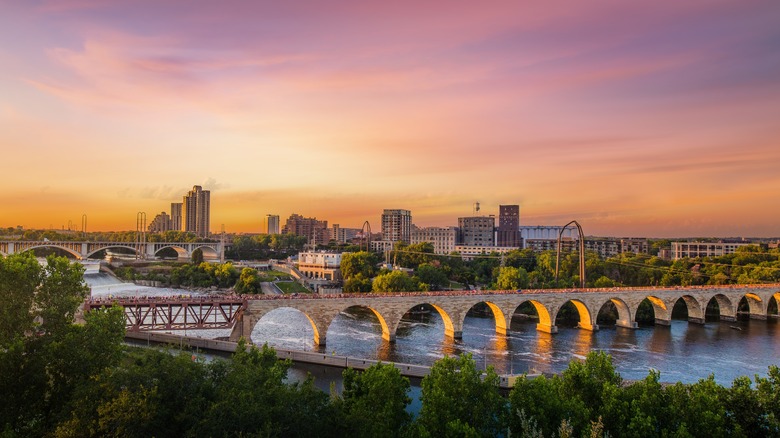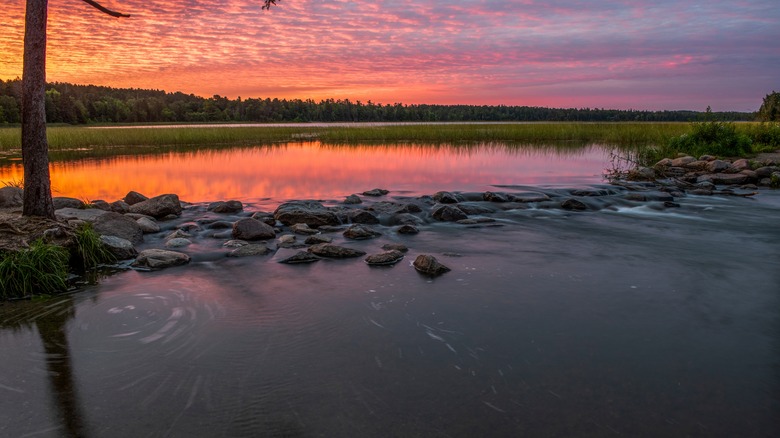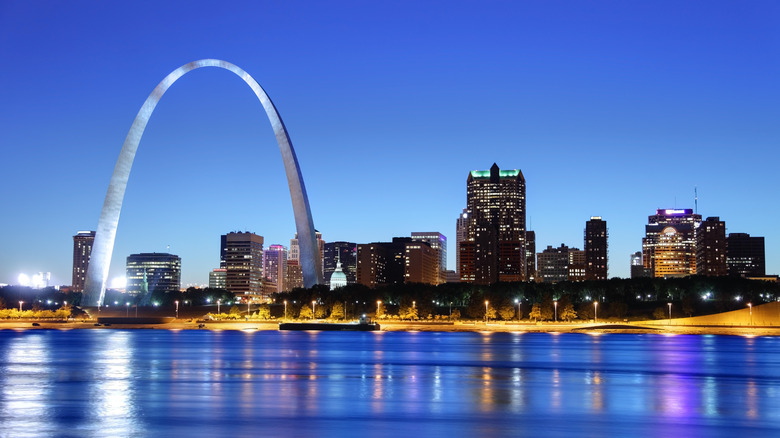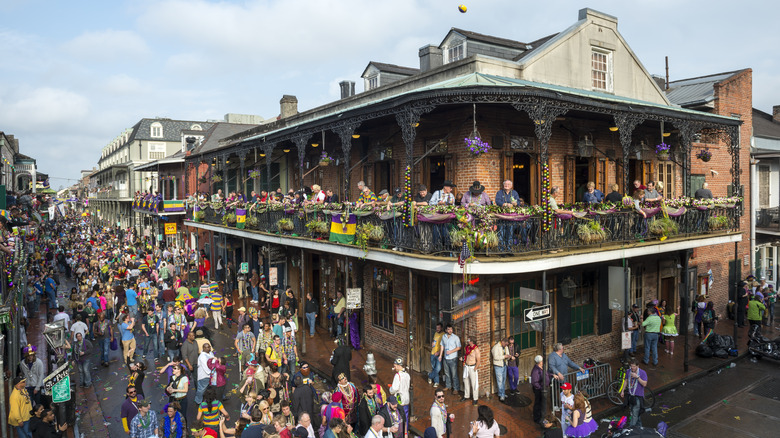Drive Along This Riverside Road Trip Route And Knock 10 States Off Your Bucket List
Popular tourist destinations are countless in the United States, but even the journeys to these destinations are steeped in American culture as well, thanks to the popularity of road trips. From Highway 101 along the coast of California to Highway 2 across the northern U.S., road trip routes take travelers across varying terrain and through multiple states. Some routes follow iconic components of the American landscape, such as the Mississippi River.
Stretching more than 2,000 miles, the Mississippi River is the second longest river in the United States. Road tripping along the river as it cuts through the Midwest is convenient thanks to the Great River Road, which was designed with sightseeing in mind. To follow it, look for signs featuring a green pilot's wheel with a steamboat, or break it into sections with the help of its website. The Midwest is an area of the U.S. known for its gently rolling landscapes and unique landmarks, and the region is rich in history. Following the Great River Road shows off these aspects on a road trip that incorporates 10 states.
See the origin point of the Mississippi River in Minnesota
The Mississippi River actually begins with a lake. Though the river's source has been debated, Minnesota's Lake Itasca (pictured above) and the lake's Nicolet Creek is now widely considered to be the location of the river's headwaters, and a post situated at the lake's northern point marks the spot where the Mighty Mississippi begins. Lake Itasca is a gorgeous starting point for a road trip along the Great River Road because of its surrounding pine tree forests that make up Itasca State Park.
Further south along the Great River Road is Minneapolis and St. Paul. While this metropolitan area includes the Mall of America — the largest mall in the United States — the Mississippi River does not take a back seat. Near the river are Hidden Falls Regional Park, and Minnehaha Regional Park, both with waterfalls just minutes from the heart of Minneapolis.
From Wabasha, Minnesota, along the Iowa and Wisconsin border, and finally to Rock Island, Illinois is the Upper Mississippi River National Wildlife and Fish Refuge. More than 240,000 acres of protected Mississippi River floodplains can be accessed at parks like Iowa's Pikes Peak State Park and Frenchtown Park, which both offer views of the Mississippi River and camping.
Ride to the top of the Gateway Arch in St. Louis
Another city to explore along the Great River Road is St. Louis, Missouri. This city is famous for the 630-foot tall Gateway Arch overlooking the Mississippi River. Visitors can take a tram inside the arch to its highest point for views of the city. Near the arch is the Old Courthouse. This 1830s landmark was the site at which the enslaved Dred Scott attempted to sue for his freedom.
The Mississippi River only makes up a small portion of Kentucky's border, but just minutes from the river is the Wickliffe Mounds State Historic Site, which showcases mounds built by Native Americans centuries ago. The Ceremonial Mound offers sweeping views of the river as well. Arkansas's portion of the Great River Road features more Native American history at the Hampson Archeological Museum State Park. Admission to this interactive museum is free and its collection of artifacts includes pottery and farming tools dating back to the tribes' original settlements.
Fast forward to the mid-1800s and Vicksburg, Mississippi becomes a significant location for Civil War history. Union and Confederate troops both vied for control of Vicksburg for 18 months until the Confederates surrendered to the Union under General Ulysses Grant. Head to the Vicksburg National Military Park for monuments and memorials to the soldiers.
Experience a melting pot of culture in New Orleans
The Great River Road takes road trippers to both civil rights history and pop culture history in Memphis, Tennessee. Trailblazing Memphis Free Speech newspaper editor Ida B. Wells reported on lynchings in 1892. On Beale Street in Memphis, there is a plaque and a statue near the former location of her newspaper's office. In the 1920s, Beale Street became a popular location for jazz and blues music, eventually seeing the likes of B.B. King and Louis Armstrong. Beale Street's music accounted for some of the influences that lead Elvis Presley and his early recordings at Sun Records to become integral in the rise of rock and roll music. Sun Records and Presley's iconic home, Graceland, are both open to the public and located just minutes from Beale Street.
Follow the music to New Orleans, Louisiana where the Mississippi River empties into the Gulf of Mexico. The city's former French ownership coupled with the mixture of African Americans and immigrants from Europe and Central America make this city a hub for all aspects of culture. Aside from vibrant Mardi Gras celebrations, New Orleans boasts Cajun cuisine, musicians busking on popular streets, riverboat tours, and even haunted places like Napoleon House and The Bourbon Orleans. It makes for quite an exclamation point at the end of a fascinating cross-country road trip.



